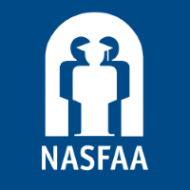Financial Aid Offices Face Turnover and Staffing Shortages as ‘Great Resignation’ Hits Home

NASFAA
Owen Daugherty
January 7, 2022
After nearly 50 years working in financial aid, Sue Pedigo had earned her retirement.
She left Vol State Community College in Gallatin, Tennessee, in the summer of 2019 expecting to carry on the life of a retiree, no longer burdened by working long hours and keeping operations running smoothly at the financial aid office she had called home for 48 years, about 40 of which she served as the director.
But a little more than two years later, in the summer of 2021 when the country was still in the midst of a pandemic, Pedigo received a call asking her to come back to Vol State and assume the role of financial aid director she had only recently departed. To her surprise, the aid director who took her place had already left. Pedigo’s replacement had decided to retire early.
“I was happy to be retired. I needed to retire,” Pedigo said of her decision to depart the aid office. “I needed to do that for myself and my husband. And the school understood that and they wanted me to have that. It just ended up that they weren’t ready for it.”
She has since returned to Vol State to guide the financial aid office while it again seeks a permanent financial aid director, a predicament all too many financial aid offices are dealing with as the higher education sector — and financial aid specifically — is facing staffing shortages across the country due to increased turnover caused at least in part by burnout amid the pandemic, an aging workforce, and several other factors leaving schools struggling to compete for skilled workers in a highly competitive job market.
“For the last several years, one of the items at the top of the board of director’s agenda has been succession planning and retaining staff,” said NASFAA President Justin Draeger. “You see that reflected in our trainings, conference tracks, and online forums because the stakes are high for schools that cannot hire or retain qualified staff.”
CONTINUE READING
Share








